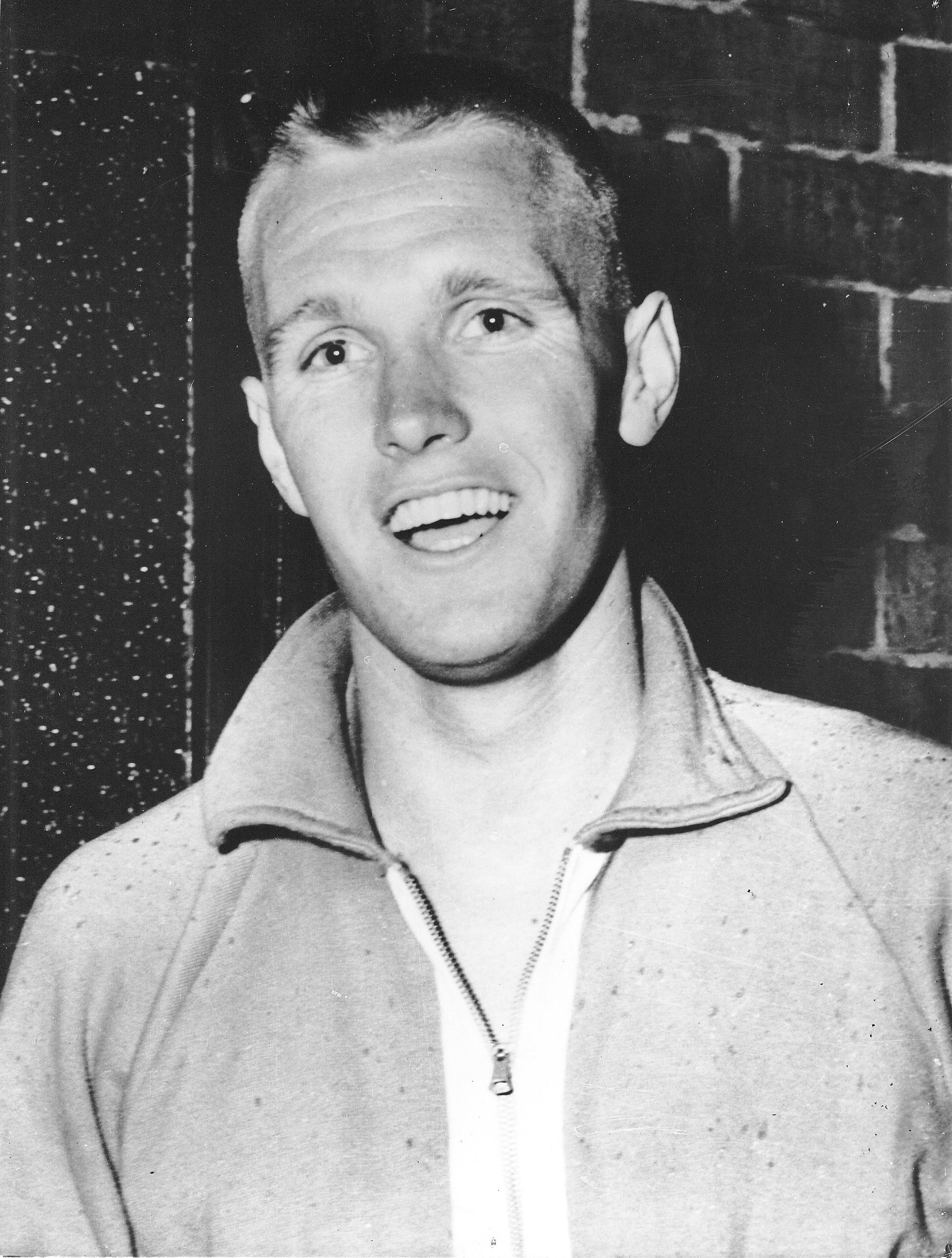
Jon Henricks (AUS)
Honor Swimmer (1973)
FOR THE RECORD: OLYMPIC GAMES: 1956 gold (100m freestyle; 4x200m freestyle relay); AUSTRALIAN CHAMPIONSHIPS: 1952 gold (400m freestyle), silver (800m freestyle), bronze (1500m freestyle); 1953-1958 (10: 100m freestyle, 4x200m freestyle relay); BRITISH EMPIRE GAMES: 2 medals; JAPANESE NATIONALS: 1 medal; KEO NAKAMA meet: 1 medal; PHILIPPINE NATIONALS: 1 medal; AMERICAN NATIONALS (Outdoor): 1958 (100m, 200m freestyle); AMERICAN RECORDS: 2; Australian Athlete of the Year: 1955 (named by the Helms Hall of Fame).
Jon Henricks started his swimming career as a distance swimmer, scoring his first real successes in 1952 when he came in 3rd in the Australian 1500 meters, 2nd in the 800, and won the 400 meters. The distance work proved too arduous, perhaps due to a prolonged ear infection that kept Jon off the 1952 Olympic team. With reluctance, his coach Harry Gallagher converted him to sprints. Henricks shocked both his coach and the Australian swimming community by promptly breaking the Olympic record for 100 meters in the Australian Championships of 1953. He subsequently held the fastest time in the world over 100 meters long course for 5 years, winning two gold medals in 1956 (100m and 4x200m). He lowered the existing record by almost 2 seconds.
During that time, he won ten Australian Individual Championships in those events, two British Empire Games medals establishing new records in 1954, the Japanese Nationals, the Keo Nakama meet in Hawaii, the Philippine Nationals, and broke two American records while on a visit in 1954. In 1958, he won the American National (outdoor) 100 and 200 meters. He was named Australian Athlete of the Year by the Helms Hall of Fame in 1955.
As a freshman at U.S.C. he teamed with Murray Rose, Don Reddington, Tom Winters, and Denis Devine, a five man Freshman team that broke the New Haven Swim Club’s dynastic grasp on the indoor AAUs. Daland had been a former Yale assistant considered least likely to succeed. This U.S.C. frosh team grew to a giant machine in the late fifties and early sixties, dominating the Pacific 8 Conference and winning four consecutive National Collegiate titles.
In 1960 Henricks made another attempt at the Olympics, winning the Australian trials handily. His attempt came to grief over what was euphemistically referred to as the “Roman Tummy”, and John Devitt and Lance Larson were left to battle it out. He had mixed feelings viewing that race, as both were teammates; Lance on Jon’s U.S.C. team, John Devitt on his Australian team. The fastest man in the world, at that time, Jeff Farrell, also glumly watched the race from the sidelines.
Jon Henricks did win in another way in 1960, marrying an American girl – the former Bonnie Wilkie, sister of one of his U.S.C. teammates Mike Wilkie. Both the Australian and American teams attended the wedding, which produced the historic picture of Lance Larson and John Devitt hugging each other.
